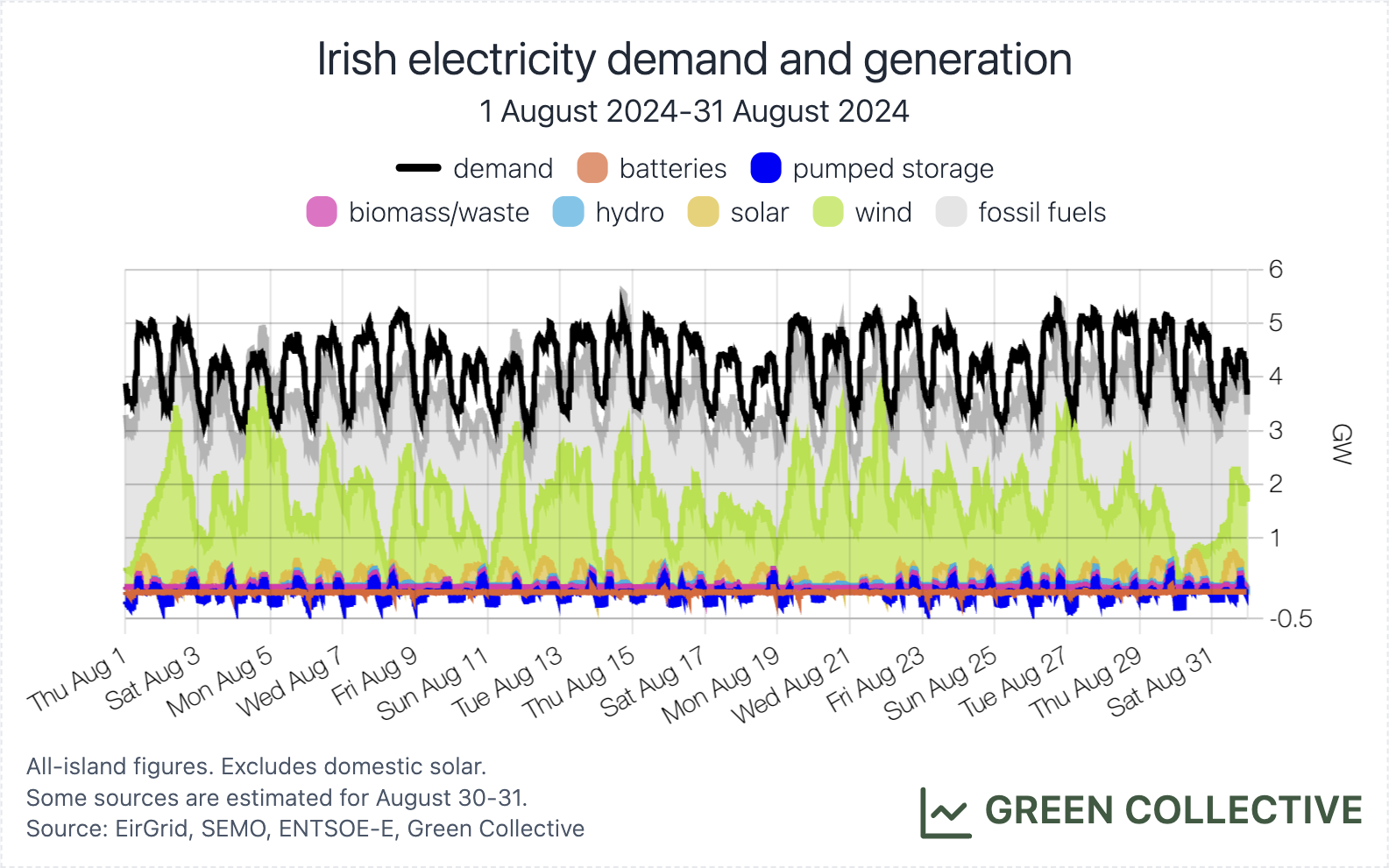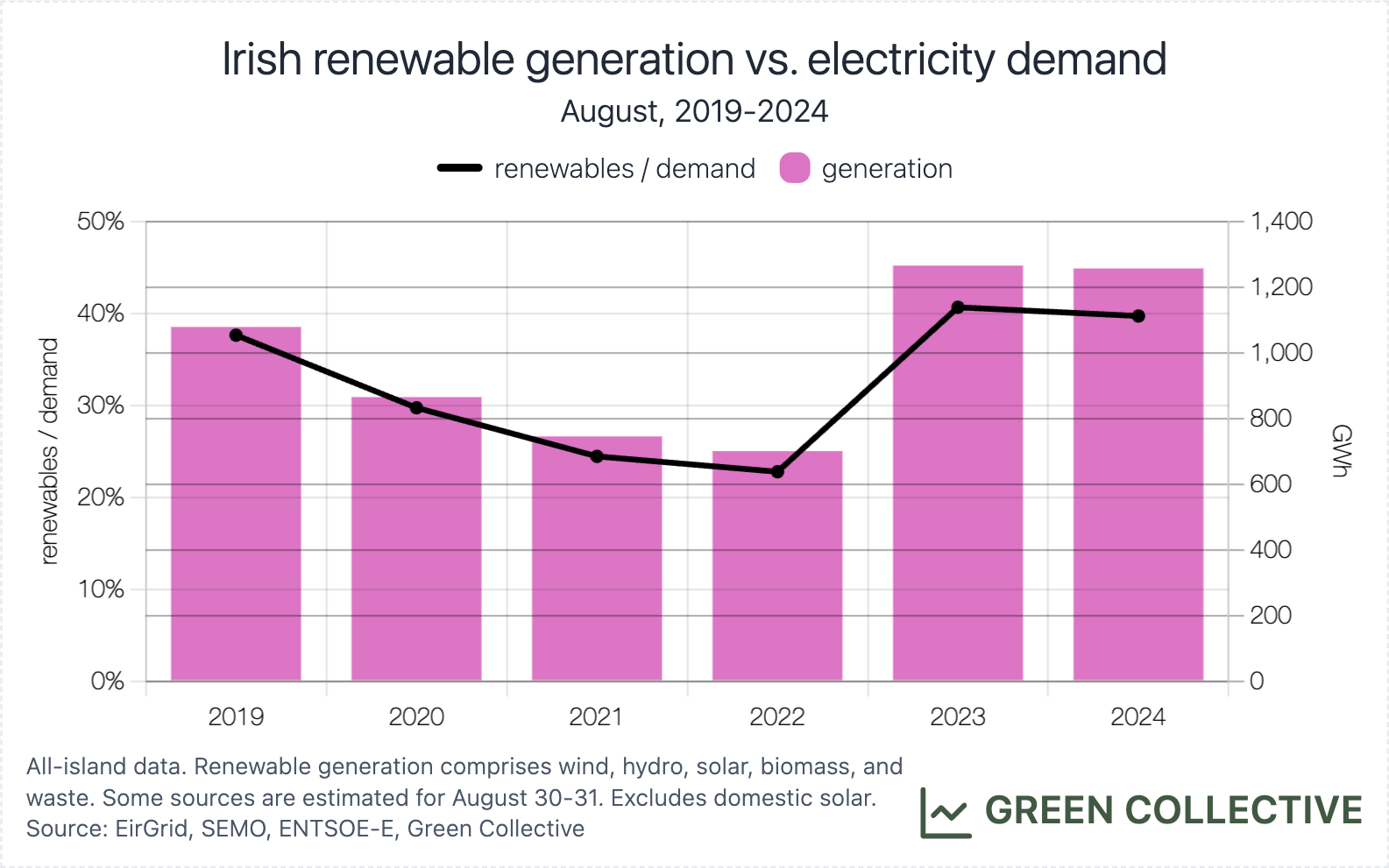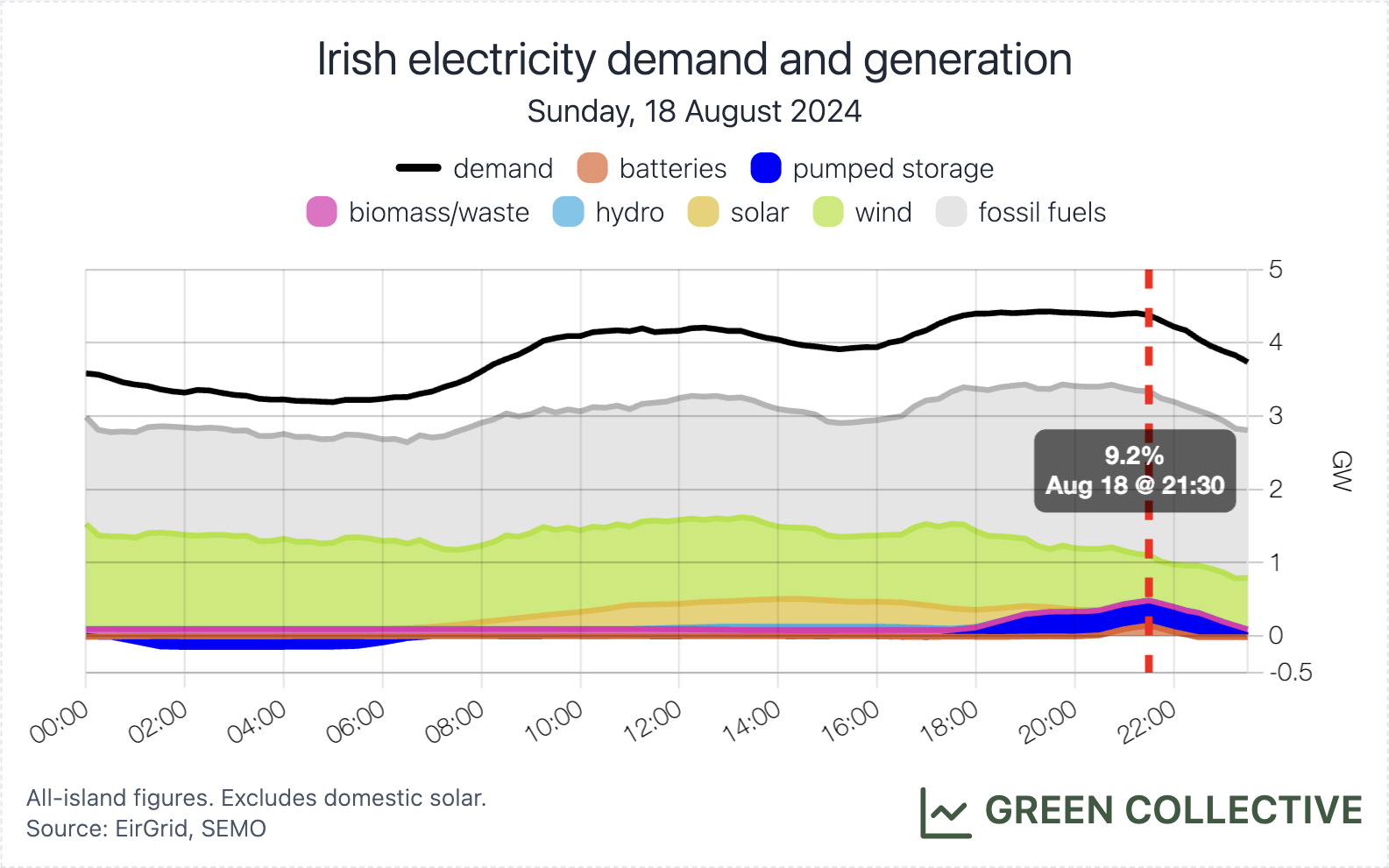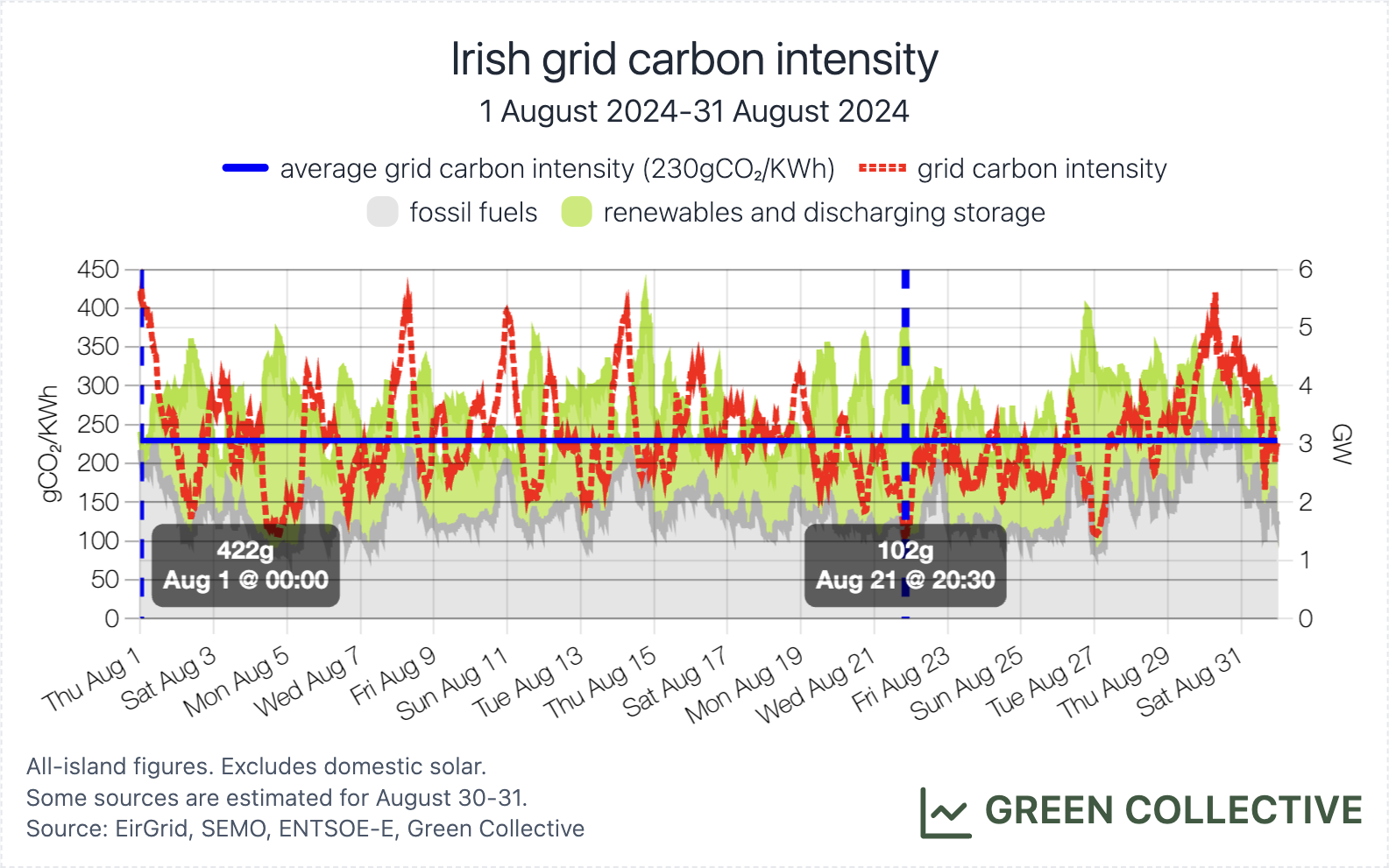Note: This article was updated September 3 to incorporate a surprise solar output record revealed by SEMO market data published September 2.
Summary
Generation from renewable sources during August 2024 was equivalent to 39.7% of all-island electricity demand:
- 33.8% wind
- 0.9% hydro
- 2.1% biomass/waste
- at least 3% solar
1256GWh was the second-highest amount of renewable generation yet seen during an August month, finishing just shy of August 2023's 1265GWh. We also saw the second-highest peak output for renewables during an August month: 3786MW, again beaten only by August 2023. This represents a welcome continuation of a reversal of the decline in August renewable generation observed from 2020-2022 thanks to stronger winds and solar generation.
Fossil fuel generation was equivalent to 44.8% of demand. This was not only the lowest share for fossil fuel generation yet seen in an August month but it was also the lowest share for fossil fuel generation yet seen during any Irish summer month (June through August).
So far in 2024, renewable generation has equalled 39.1% of electricity demand.
Exhibit 1: All-island demand met by different sources, August 2024

Exhibit 2: All-island August renewable generation, 2019-2024

Wind
1068.7GWh was the most wind power yet generated during an August month and was equivalent to 33.8% of all-island electricity demand, also an August record. This was the second time August wind generation has exceeded 1TWh.
County Kerry this month reclaimed its top spot for wind generation from Cork, with approximately 13% of all wind generation taking place in Kerry. Together, the two south-west counties accounted for almost 25% of the month's wind generation. This was equivalent to a little over 7% of the month's all-island electricity demand.
Exhibit 3: Wind generation by county, August 2024

Storage
Battery discharge reached 143MW on the evening of Sunday August 18. This is the first time battery discharge has exceeded 100MW for several months. Although lower than the current all-time high of 175MW observed in February of this year, significantly lower summer weekend demand meant that this was equivalent to 3.3% of all-island demand at the time: a new record on the Irish grid. Adding in Turlough Hill, storage in total was equal to 9.2% of all-island demand at the time. This was also a new record.
While welcome news, 143MW is a fraction of the current island-wide battery capacity of 956.5MW/1062MWh and we would expect the Irish grid to be making much more effective use of battery storage to help offset peak loads.
Exhibit 4: Storage discharge record, August 18 2024

Solar
Irish solar set one last record this summer: market data from SEMO shows that on August 31 solar output reached at least 641MW, even higher than the previous all-time market data high of 620MW set June 23. We were able to revise that figure of 620MW to 681MW when Eirgrid published its utility-scale data and we expect to be able to revise August 31st's 641MW to approximately 700MW, or approximately 17% of all-island demand at that time.
In terms of generation for the month, SEMO data confirms at least 94GWh of all-island solar generation which was equivalent to at least 3% of all-island electricity demand. We will likely be able to revise this to approximately 3.3% when Eirgrid publishes its utility-scale data which would place August 2024 as the third-best month yet for Irish solar.
As in recent months, County Meath was home to approximately 50% of the month's solar generation with the next largest producer, County Wexford, accounting for approximately 22%.
Carbon Emissions
We estimate that for each KWh of electricity generated in August the Irish grid emitted between between 102g and 422g of CO2, for an average of 230gCO2/kWh.
This is the lowest average figure yet seen for an August month and continues a trend this year (broken so far only in July) in which year-on-year carbon intensity was lower than in 2023.
So far in 2024, the average carbon intensity of the Irish grid is 243gCO2/kWh.
Exhibit 5: All-island grid-carbon intensity, August 2024
